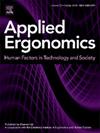A cue-based processing approach to differentiating levels of safety performance in remotely piloted aircraft operations
IF 3.4
2区 工程技术
Q2 ENGINEERING, INDUSTRIAL
引用次数: 0
Abstract
This research was designed to examine the contribution of domain-specific cue utilization and self-reported experience to safety performance within the context of small Visual Line of Sight (VLOS) Remotely Piloted Aircraft (RPA) operations. The capacity to utilize and integrate domain-specific cues is potentially advantageous in operating aircraft where the range of sensory cues available is constrained. However, the impact of domain-specific cue utilization on safety performance has yet to be investigated in the context of RPA operations. Data were obtained from 48 remote pilots with a range of operational experience. The participants completed the VLOS RPA edition of EXPERTise 2.0, which provided an assessment of cue utilization. The participants also completed a survey of their experience of adverse RPA safety events. The results indicated that small VLOS RPA pilots with relatively higher levels of domain-specific cue utilization were less likely to be involved in adverse RPA safety events, independent of conventional and remote aviation flying experience. While higher levels of recent remote flying activity were advantageous for all remote pilots regardless of their level of cue utilization, higher levels of recency were associated with a disproportionate improvement in the safety performance of individuals with relatively lower levels of cue utilization. The outcomes have implications for both training and the assessment of pilot performance in RPA operations.
一种基于线索的处理方法来区分远程驾驶飞机操作中的安全性能水平
本研究旨在研究在小视距(VLOS)遥控飞机(RPA)操作背景下,特定领域线索利用和自我报告经验对安全性能的贡献。利用和整合特定领域线索的能力在操作飞机时具有潜在的优势,其中可用的感官线索范围受到限制。然而,在RPA操作的背景下,特定领域的线索利用对安全性能的影响还有待研究。数据来自48名具有丰富操作经验的远程飞行员。参与者完成了VLOS RPA版的专家知识2.0,该版本提供了线索利用的评估。参与者还完成了一项关于不良RPA安全事件经历的调查。结果表明,与传统和远程航空飞行经验无关,具有较高领域特定线索利用水平的小型VLOS RPA飞行员参与不良RPA安全事件的可能性较小。尽管高水平的近期远程飞行活动对所有远程飞行员都是有利的,无论他们的线索利用水平如何,但高水平的近期远程飞行活动与相对较低线索利用水平的个体在安全表现方面的不成比例的改善有关。研究结果对RPA业务中飞行员的培训和绩效评估都有影响。
本文章由计算机程序翻译,如有差异,请以英文原文为准。
求助全文
约1分钟内获得全文
求助全文
来源期刊

Applied Ergonomics
工程技术-工程:工业
CiteScore
7.50
自引率
9.40%
发文量
248
审稿时长
53 days
期刊介绍:
Applied Ergonomics is aimed at ergonomists and all those interested in applying ergonomics/human factors in the design, planning and management of technical and social systems at work or leisure. Readership is truly international with subscribers in over 50 countries. Professionals for whom Applied Ergonomics is of interest include: ergonomists, designers, industrial engineers, health and safety specialists, systems engineers, design engineers, organizational psychologists, occupational health specialists and human-computer interaction specialists.
 求助内容:
求助内容: 应助结果提醒方式:
应助结果提醒方式:


